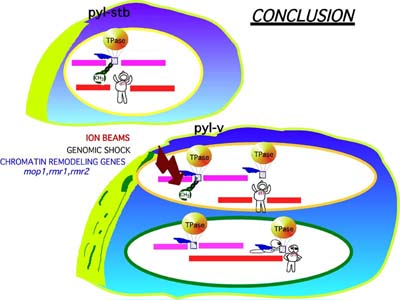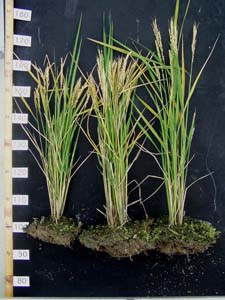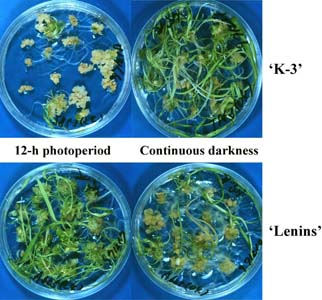|
Research Activity
This group is studying the genetic factors necessary for efficient crop production by introgression or genomic rearrangement from wild species. The mechanism of gene expression by phytohormone is also being studied.
1. Discovery of DNA transposable element in rice
Genome sequencing in rice has been almost completed and functional genomics is now in progress. Tagged gene-knockout lines are very useful in functional genomics. In rice, no active DNA transposons other than mPing in MITE family have been found. We identified an active Ac/Ds type transposon, nDart (non-autonomous Ds-related active rice transposon) in a mutable virescent mutant derived from a wide cross by map-based cloning. A nDart-tagged mutant pool is now beeing constructed.

2. Development of vigorous rice through introgression from wild rice and analysis of the causative factors
Ideally, agriculture must be harmonized with the global environment through appropriate management in the 21st century. In order to reduce environmental degradation and our dependency on purchased inputs, it is important to breed rice varieties highly adaptable to low input conditions. Our studies aims at elucidating genetic factors responsible for vigorous growth which is an important component for high productivity in a low input condition, using partial substitution lines of wild rice related chromosomes. Out of partial substitution lines of Oryza longistaminata (wild rice species in Africa) chromosomes with Shiokari's genetic background, one line showed vigorous growth. Subterminal regions of long arms of chromosome 3 and 7 of Oryza longistaminata in this line are found to be introgressed through genome analysis.

3. Effects of barley semi-dwarf gene 'uzu' on shoot regeneration in cultures derived from immature embryos
The interaction of phytohormones is important for elucidating the control of gene expression by phytohormones. The semi-dwarf plant type of uzu barley is caused by the mutation in the brassinosteroid receptor kinase gene, HvBRI1. Several studies indicated that the uzu gene influenced the amount of endogenous IAA and cytokinin contents. The interaction of phytohormones was investigated in tissue culture in which dedifferentiation and regeneration are regulated by auxin and cytokinin. We examined the callus growth and shoot regeneration ablities in the cultures derived from immature embryos of the F2 populations, which derived from the crosses between normal and uzu lines, and of isogenic lines. Uzu gene showed no effects on the callus growth. Normal lines showed a higher percentage of shoot regeneration than uzu lines. Uzu gene negatively regulates the shoot regeneration of calli derived from immature embryos.

〒710-0046 Group of Genome Regulation
Okayama University 2-20-1 Chuo, Kurashiki, Okayama 710-0046, Japan
TEL +81-86-434-1214 (Maekawa), +81-86-434-2199 (Rikiishi), +81-86-434-2199
(Utsugi)
|